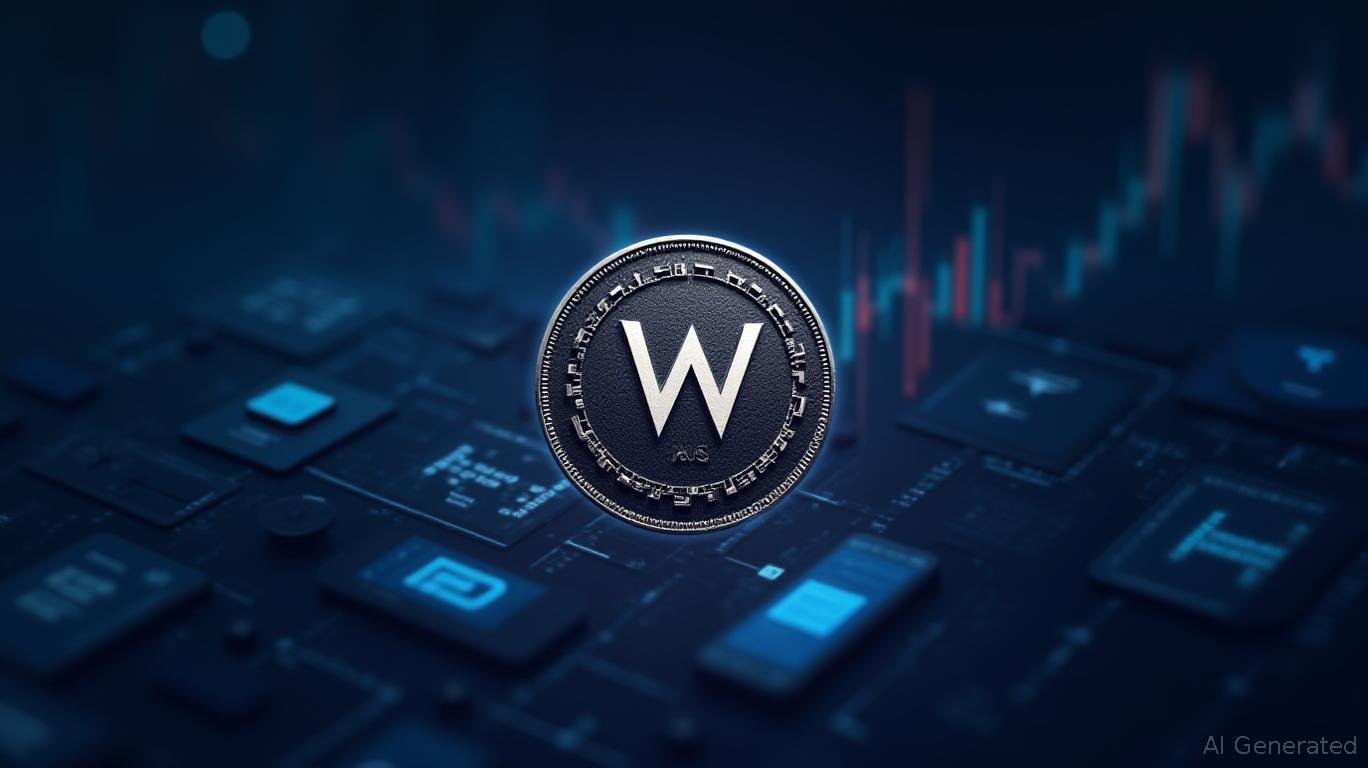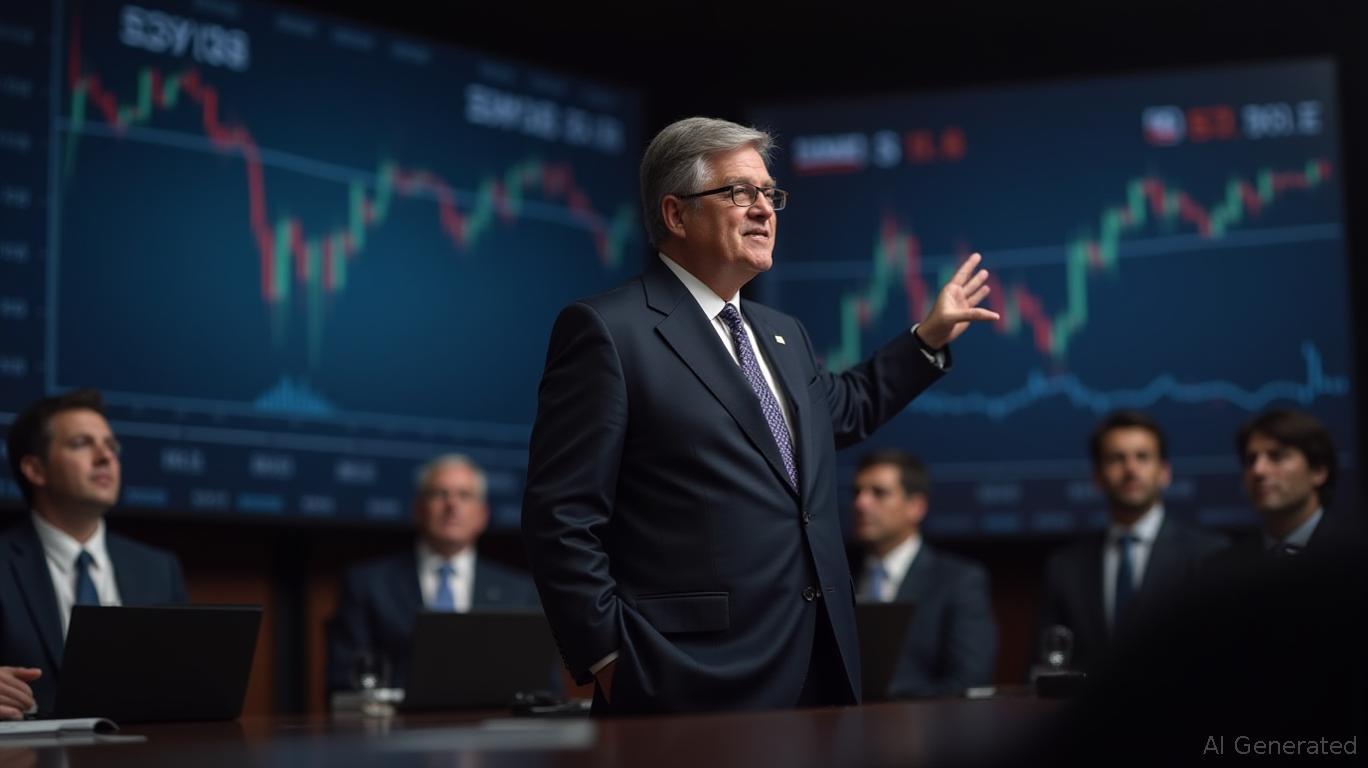WEMIX Enhances Protection through CertiK Partnership as Stablecoin Ambitions Face Regulatory Challenges
- WEMIX partners with CertiK to enhance security and compliance for its KRW-backed stablecoin projects amid regulatory scrutiny. - Bank of Korea warns of depegging risks and institutional trust gaps in private stablecoins, citing historical failures like Terra/Luna. - WEMIX's $7.7M token buybacks aim to stabilize value after June 2025 delistings caused a 67% price drop, contrasting with bearish market sentiment. - The Legend of YMIR game's G-WEMIX token seeks to boost utility, though Web3 gaming's speculat
WEMIX, a pioneering blockchain initiative from Korea, is forging ahead in the Web3 arena, demonstrating adaptability through new alliances and technological advancements despite facing regulatory scrutiny and market challenges. The project, which has encountered both delistings and security incidents, is strengthening its compliance and reliability—especially for its KRW-backed stablecoin efforts—by partnering with cybersecurity leader CertiK, as detailed in a
The collaboration between WEMIX and CertiK, revealed during Korean Blockchain Week, highlights a commitment to robust security standards and regulatory compliance. CertiK has applied its formal verification tools to audit more than 120 components of the WEMIX ecosystem, reinforcing the platform’s security. This partnership also includes Wemade’s STABLE ONE initiative—a KRW-linked stablecoin built for seamless integration with Korea’s financial infrastructure. This development comes as the Bank of Korea (BOK) raises concerns about stablecoin depegging risks and stresses the importance of institutional credibility in stablecoin issuance. The BOK’s analysis, referencing past currency failures and the Terra/Luna debacle, contends that private stablecoins lack the necessary protections for financial stability.

In spite of these obstacles, WEMIX has remained optimistic, implementing significant token buybacks to support its market value. During the second quarter of 2025, the WEMIX Foundation allocated $7.7 million to repurchase 10 million tokens, aiming to decrease circulation and stabilize prices, as reported in a
Ethereum’s recent rally to $4,099 on October 26 mirrors a broader sense of optimism in the crypto sector, partly driven by expectations surrounding U.S.-Korea trade discussions, as noted in an
The BOK’s prudent approach to stablecoins stands in contrast to the rapid progress of private ventures like WEMIX and BDACS’s KRW1 stablecoin, which operates on the
Disclaimer: The content of this article solely reflects the author's opinion and does not represent the platform in any capacity. This article is not intended to serve as a reference for making investment decisions.
You may also like
Bitcoin Updates: Fed’s Softer Stance Supports Both Economic Expansion and Inflation—Positive Momentum for Crypto
- The U.S. Federal Reserve cut rates by 25 bps to 3.75%-4.00% on October 29, 2025, ending quantitative tightening by December 1, easing liquidity constraints. - Crypto markets initially dipped post-announcement but gained analyst support as lower rates and weaker dollar historically boost Bitcoin and Ethereum as hedges. - Institutional crypto demand remained strong with Coinbase reporting 2,772 BTC inflows and Bitcoin ETFs seeing net inflows, while Tether's USDT supply surpassed $183 billion. - The Fed's "

Bitcoin News Update: Bitcoin Rally Drives $2.8B in Gains While Strategy's Shares Drop 15% Year-to-Date
- Strategy Inc. (MSTR) reported $2.8B Q3 2025 net income from Bitcoin's $70.6B portfolio (640,808 BTC) amid $20B unrealized gains. - New fair value accounting rules enabled profit recognition without selling Bitcoin, reversing $340M 2024 losses and boosting operating income to $3.9B. - CEO Phong Le targets $34B operating income if Bitcoin hits $150K, while $20B 2025 capital raises expanded holdings by 40,000 BTC. - Despite 51.74% BTC gains, shares fell 15.15% YTD due to dilution concerns, contrasting with

MEV's Tendency to Centralize Poses a Challenge to the Fundamental Principles of DeFi
- MEV (Maximal Extractable Value) destabilizes DeFi markets by enabling miners/validators to reorder transactions for profit, imposing a "hidden tax" on retail traders through front-running and sandwich attacks. - Aditya Palepu highlights systemic risks: 80% of MEV costs fall on retail users, while institutions avoid DeFi to mitigate front-running risks, undermining market liquidity and stability. - Trusted Execution Environments (TEEs) encrypt transactions pre-execution to block front-running, but vulnera

MEV Takes Advantage of DeFi Transparency, Triggering Concerns Over Fairness
- MEV exploits blockchain transparency to reorder transactions, creating a "hidden tax" that deters institutional DeFi adoption and harms retail users. - Sandwich attacks and front-running cost retail investors up to 80% of MEV-driven losses, with 24% of Ethereum blocks affected annually. - Trusted execution environments (TEEs) emerge as a solution by privatizing transaction data, potentially unlocking $trillions in institutional capital. - Experts warn MEV centralizes power and inflates costs, requiring g
